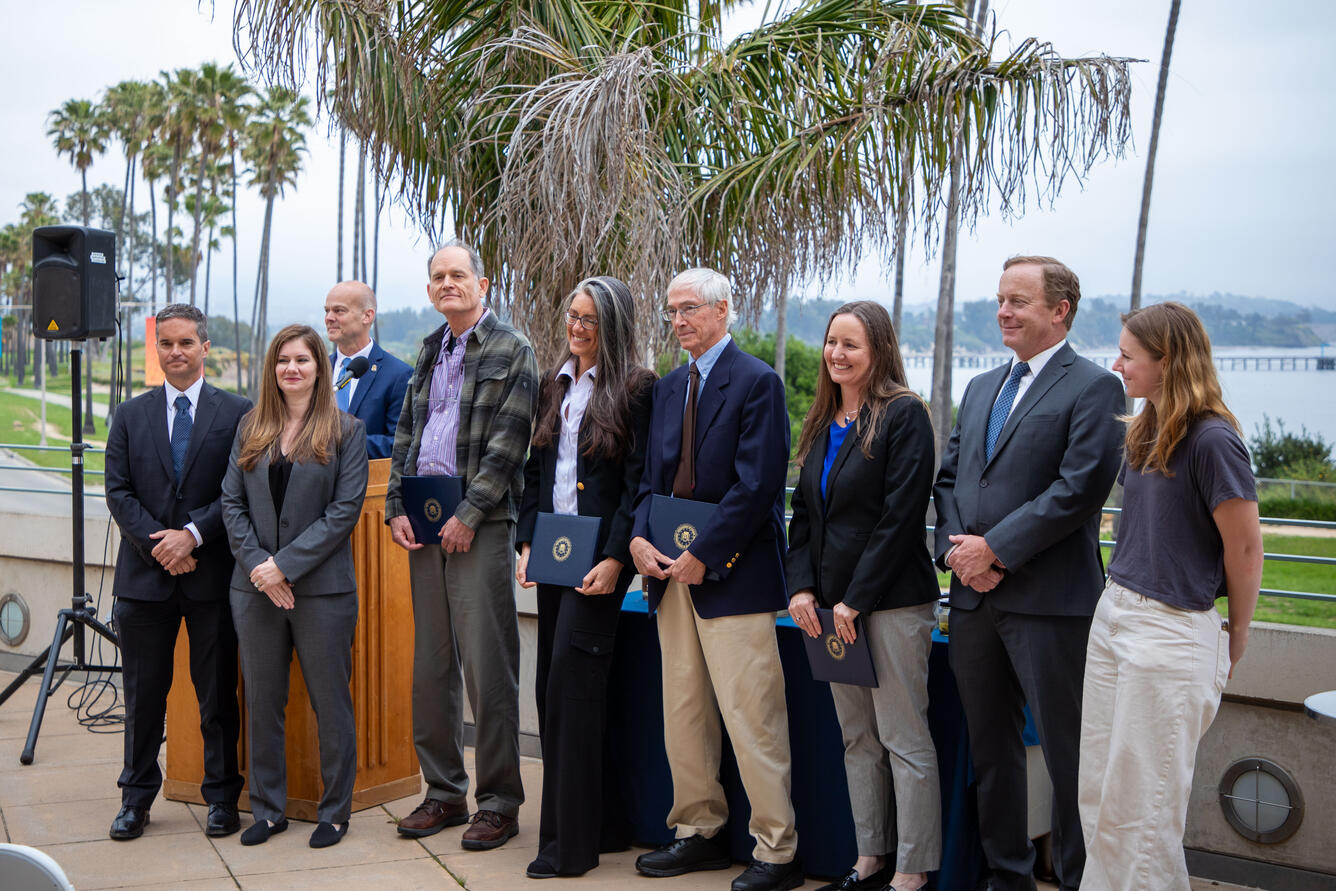Collaborative Federal Investigation Reveals Cause of Huntington Oil Spill
USGS Research Geophysicist Guy Cochrane among those who received FBI Director's Awards for assisting
A collaborative investigation involving multiple federal agencies, including the FBI, U.S. Attorneys' Office, U.S. Coast Guard (USCG), Bureau of Ocean Energy Management (BOEM), Environmental Protection Agency (EPA), and U.S. Geological Survey (USGS), utilized innovative techniques to pinpoint the cause and responsible parties of the disastrous 2021 spill.
On October 3, 2021, a black sheen of oil marred the shores of Huntington Beach, California, stretching nearly six nautical miles and extending as far south as San Diego. Over three days, 25,000 gallons of oil leaked from a damaged pipeline located eight miles offshore, leading to the closure of beaches, significant financial losses for local businesses, and immeasurable harm to wildlife.
This environmental disaster, initially traced to a leak in the San Pedro pipeline, was later found to have originated months earlier due to pipeline damage inflicted by a maritime accident.
A multi-pronged investigation was launched to determine the cause. First, USCG used a remotely operated vehicle to survey the pipeline, locating the visibly damaged portion. Then, biologist divers from BOEM and the FBI determined the approximate date of the damage by measuring the size and extent of marine invertebrates that had settled on the damaged surfaces. Sonar surveys later revealed anchor furrows on the seafloor that intersected the damaged pipeline, as well as 20 meters (~67 feet) of pipeline displacement.
USGS Research Geophysicist Guy Cochrane played a pivotal role in the investigation, performing the processing and analysis of sonar data to assess the cause of the pipeline damage.
By correlating these findings with surficial geology, GPS data from nearby ships, and wind and tide data during the time of the rupture, Cochrane created a timeline of the events and provided documentation of the movement of two vessels that were anchored in the area when the accident occurred.
The root cause of the pipeline damage was traced back to a severe thunderstorm on January 25, 2021, eight months before the oil spill. High winds and rough seas wreaked havoc on cargo ships waiting offshore, causing them to drop their anchors and engage their engines to maintain position. Despite these efforts, the storm's force dragged two ships' anchors across the seafloor, ultimately striking, displacing, and eventually rupturing the San Pedro pipeline.
This sophisticated investigation combined sonar technology, biological sampling by human divers, and environmental data on wind, tides, and ship movements to reconstruct the events leading to the pipeline rupture. The meticulous work by the team not only identified the timeline and parties responsible but also provided the basis for securing financial restitution for victims affected by the spill.
For their exceptional contributions, Cochrane and other members of the investigative team were honored with FBI Director’s Awards.
See a related news story from the FBI.
Get Our News
These items are in the RSS feed format (Really Simple Syndication) based on categories such as topics, locations, and more. You can install and RSS reader browser extension, software, or use a third-party service to receive immediate news updates depending on the feed that you have added. If you click the feed links below, they may look strange because they are simply XML code. An RSS reader can easily read this code and push out a notification to you when something new is posted to our site.



